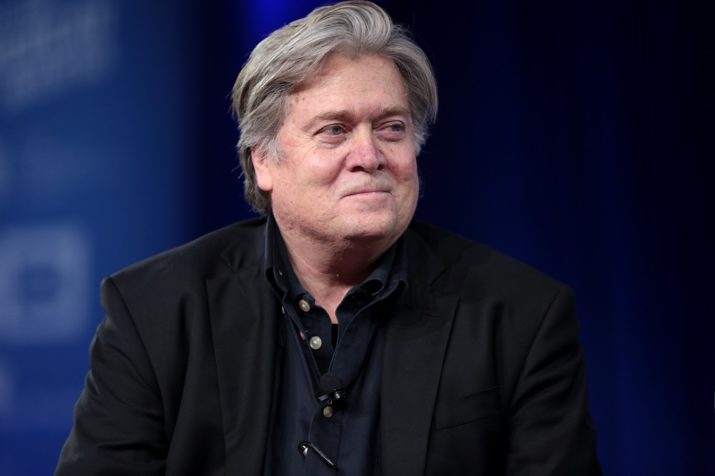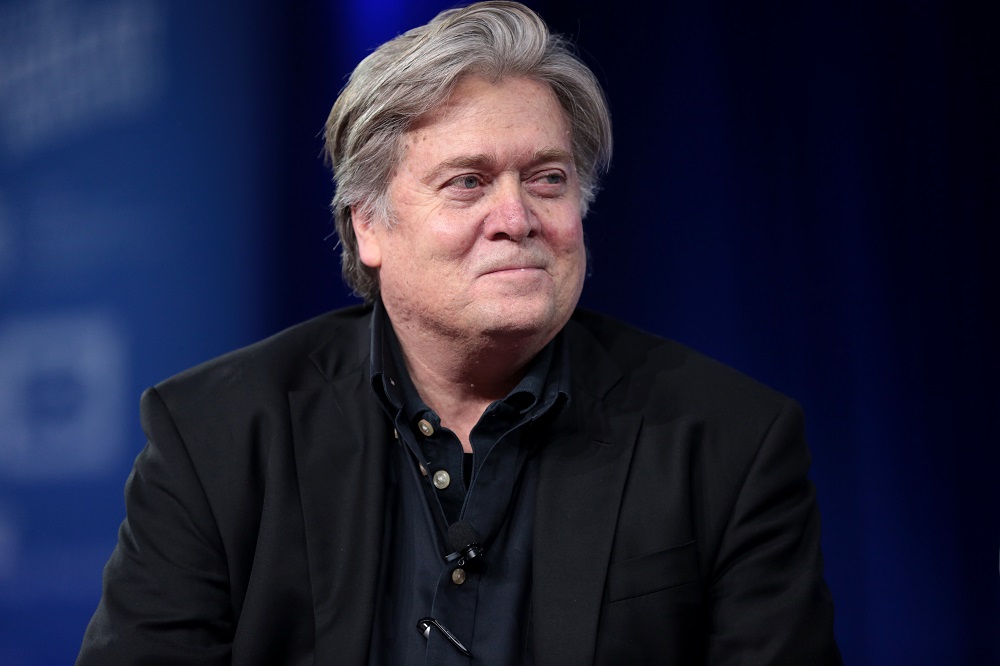

This is part of our special feature, Nationalism, Nativism, and the Revolt Against Globalization.
On November 25, 1970, Yukio Mishima knelt in the commandant’s office of Tokyo’s Japan Self-Defense Forces headquarters and committed ritual suicide, slitting open his belly with a dagger before—after several attempts—two associates severed his head with his antique sword. A tragic, but suitable end for one of literature’s most controversial figures within whose life, death, and work, are echoes of the alt-right and our own socio-political struggle.
Moments prior to seppuku, Mishima stood on the office balcony in front of a crowd of mustered soldiers and attempted to inspire a coup that would restore the emperor’s pre-war powers and allow Japan to break free from tightening Western—especially US—influence. He wished to return his country to a place where traditional values such as bushido, the code of the samurai, upheld the emperor’s status as a god on earth, something Hirohito had renounced in 1946, much to his dismay.
Despite being declared unfit to serve in the war, like many Japanese, Mishima had been deeply wounded by it. He had witnessed his country’s grandiose rise to an imperial superpower boasting the samurai ethos, and then a horrific fall as—in an instant—two metropoles were reduced to ash. Suddenly, he found himself shamefully wandering a shattered country whose very spine as he saw it—the military—had been torn from its body by disarmament and crushed beneath foreign occupation.
In the ’60s, a prolific decade for Mishima, in which he emerged as both a foremost international author and an outspoken nationalist, he saw things only growing worse: the emergence of the New Left that included radical movements such as Anti-Japaneseism, was destroying all lingering vestiges of traditional Japan. The renewal of the US–Japan Mutual Cooperation Treaty in 1970, first signed in 1960, was perhaps the final insult to everything Mishima held dear. This treaty—which has had a resounding impact in current affairs in the Pacific—allowed the US to continue to intervene in both domestic Japanese and greater East Asian issues. But by then, Mishima had already risen up in physical opposition, his words failing to spark change:
In 1968, he founded a private nationalist militia called the Tatenokai, the shield society, which swore to protect the emperor. And it was with three members of his militia that he staged his coup, which is premeditated in his 1969 novel Runaway Horses. In the novel, a young revolutionary named Isao does almost exactly as Mishima did, forming his own militia with a desire “to uproot capitalism and communism, those doctrines of Western materialism,” ultimately failing in this goal and committing seppuku himself.[1]
The socio-political climate of the ’60s has been often compared to our own here in the United States, but Japan in particular at that time—a period so perfectly crystalized in the works of Mishima’s later compatriot Haruki Murakami—is particularly relevant to consider. Mishima and his comrades were, in essence, the alt-right of the day, and were expressing many of the same fears: the fear of change, the fear of difference, the fear of being replaced, the fear of being forgotten along with all they represent. The fear that their conjured myth or mythos of their respective nations, and who can rightfully belong to them, will be shattered in the realities of an ever-evolving, globalizing society.
Such fear unites most extremist groups, who form in direct reaction to moments of great progress; extremism, let’s be reminded, is strongest when traditional values are weakest. The Tatenokai led by Mishima during Japan’s leftist upheaval of the ’60s is as much an example of this as the rise of the alt-right and the leader they embrace—President Trump—in the wake of the Obama presidency. Should we look back at history, such groups can perhaps be interpreted as last, desperate efforts to reinstate tradition rather than as a sign of things to come. And indeed, Mishima’s attempted coup was ultimately futile, and perhaps he knew it would be. Perhaps he expected the jeers he received during his final speech, which drowned out his unamplified voice, and seppuku was always part of the plan, just as it was for Isao, a way in which to express his anger, frustration, and passion,[2] and to reconcile his two most pressing principles: physical action and intellectual adventure.[3]
But here in the US, the conservative grip is growing ever-tighter despite the most important catalyst of conservatism in mainstream politics—Steve Bannon—losing political favor, as the alt-right has what Mishima lacked: a popular backing of grassroots movements spurred on by a complicit president and staff that are increasingly using reasoned arguments supported by facts and figures, not violence, to spread their ideals;[4] the scenes we witnessed at Charlottesville do not represent the alt-right as a whole, but only one aspect of a nuanced movement that is quickly finding its true identity. In the meantime, it remains as difficult to define and as contradictory as Mishima himself:
Many of the alt-right’s working-class supporters continue to back a president with a fourteen-billion-dollar Cabinet and a party that consistently seeks to cut taxes for the wealthy.[5] Perhaps this is because racial issues are primarily what motivate them, not economic anxiety.[6] Mishima, meanwhile, could have alleviated much of his suffering had he embraced the progress he so desperately fought against. As a homosexual and intellectual, the traditional society he advocated was one that would always force him to hide his true self, as reflected in his semi-autobiographic novel Confessions of a Mask.
On the reverse, what the alt-right still lacks is a leader that can not only champion many of its ideals and bring them to the forefront of the political debate, but outright embraces it in return;[7] despite flattering calls of “Heil Trump,” at Charlottesville, the president has increasingly distanced himself from the alt-right, most recently by ousting their mouthpiece—Bannon—from the White House, although his policies and consistent, racist comments continue to reveal clear alt-right sympathies, granting all supporters of the movement “license to bigotry and oppression.”[8] Furthermore, he remains reluctant to outright condemn the movement.
Bannon initially appeared to be exactly the leader the alt-right needed, and can be rightfully credited with bringing their concerns to the Oval Office. However, he too has remained wary of being directly associated with the movement, and has gone so far as to condemn ethnonationalists, and by extension white nationalists, calling them “losers”[9] and “creatures of the mainstream media and the left media.”[10] Keep in mind such remarks were made while in a position of power. As an exile, he does not need to be as careful to hide his sympathies and can rejoin the movement he has spent years rousing.
Indeed, he may find himself able to operate with greater freedom in the shadows, knowing only with the help of the alt-right can he accomplish what was—and likely remains—his ultimate goal: to spark a “revolution” or “civil war” that will destabilize the governing, globalist elite, which runs the republican party and ultimately, the country.[11] He can only feel more strongly about achieving this now that Trump has turned his back on him. In Bannon’s eyes, Trump may very well be becoming but another member of the elite rather than the first phase of the populist takeover he envisioned when helping elect him president.[12]
Bannon’s goal is not dissimilar to Mishima’s, especially if we are to use Runaway Horses as a guide. In it, Isao strives to destroy the governing elite and dismantle the corrupt democracy that he—like Mishima, like Bannon—sees destroying the country’s national spirit. To put Japan and Japanese first. But it does not seem likely Bannon will take the same lonely, ultimately tragic path of Mishima and Isao, even if he has suddenly found himself similarly disgraced and at odds with society. He has, after all, proved himself a practical agent of change rather than a romantic seeking intellectual satisfaction. He must still believe the democratic system is in need of what his corrupted eyes see as a great cause—Mishima, on the other hand, had lost all hope for great causes.[13] Bannon’s apocalyptic “sensitivity to the imminence of disaster,”[14] furthermore, may have only strengthened his resolve, forcing him to consider more extreme measures to see his vision fulfilled. The results of his testimony about Russia may indicate exactly what his next steps are. He will certainly not disappear into oblivion as much as Trump may wish it, and neither will the sparks of the “war” he has called for and the alt-right that has responded to this call.
What is especially worrisome is that with him gone from both the White House and Breitbart, with Trump simultaneously condoning hate, and acting with a fragment of caution, and with an identity that has yet to fully form, the alt-right has become a nebulous, largely faceless movement, especially in mainstream politics. Like any terrorist sect, this grants it the capacity to continue to grow and infiltrate of all aspects of society without a clear target for opposition, and white nationalist Richard Spencer’s upcoming talk at Michigan State is stark evidence of this.
Even if there were a clear target, as Spencer may soon become, there are no strong countermeasures in place to fight back let alone reform the left as people like Bannon are well aware.[15] There is no New Left, which Mishima had to face along with a society that felt betrayed by the militaristic traditions he defended that had led to disaster in WWII. There is no New New Left—Bernie Sanders’ efforts for his own revolution seem to have come to a standstill, although his running as an independent offers some hope for a progressive movement that has the capacity to retaliate. Those who have stood up in the past to combat the alt-right have yet to demonstrate a willingness to go to the same lengths as their opposition. Our society has clearly not progressed enough to allow us to simply laugh and jeer in the face of a romantic or an apocalyptic or a buffoon as he stands before us and demands that we obey. The mockery we spared for Trump during his campaign and his eventual election is evidence enough of this.
And here is where we too should be afraid. As Mishima notes, “the easiest way to establish the essence of our era…[is] to take the lowest common denominator.”[16] And “those who come after us and decide what was in our minds will…seize upon the most primitive and popular credos of our day.”[17] If we are not careful, if we simply do as he did and sacrifice ourselves at the altar of insurmountable change, that lowest common denominator will be the very worst of the alt-right, whether it be Bannon or Spencer or the average spreader of hate, and those popular credos will be as primitive as those chanted at Charlottesville.
Christopher Impiglia is a writer and art book editor based in New York. He holds an MFA in Fiction from The New School and an MA in Medieval History and Archaeology from the University of St Andrews. He has previously contributed to Issue 11 and Issue 2 of EuropeNow, and his words have otherwise appeared in Kyoto Journal and Columbia Journal, among others.
Photo: Steve Bannon, Gage Skidmore | Flickr
Published on February 1, 2018.
[1] Yukio Mishima, Runaway Horses, trans. Michael Gallagher (New York: Alfred A Knopf, 1973), 256.
[2] Jeffrey Meyers, “Mishima’s Suicide,” Michigan Quarterly Review, v. 49, no. 4 (Fall 2010), http://hdl.handle.net/2027/spo.act2080.0049.418.
[3] Yukio Mishima, Sun and Steel, (New York: Kodansha International, 1970), 43, https://www.scribd.com/document/340654195/Sun-and-Steel-YUKIO-MISHIMA-pdf.
[4] Khalil Gibran Muhammad, “How the Alt-Right Uses Social Science to Make Racism Respectable,” The Nation, January 13, 2018, https://www.thenation.com/article/how-the-alt-right-uses-social-science-to-make-racism-respectable/
[5] “Donald Trump’s $14 billion Cabinet,” CBS News, https://www.cbsnews.com/pictures/donald-trumps-14-billion-cabinet/
[6] Brian Resnick, “Psychologists survey hundreds of alt-right supports. The results are unsettling,” Vox, August 15, 2017, https://www.vox.com/science-and-health/2017/8/15/16144070/psychology-alt-right.
[7] Caitlin Dewey, “The alt-right, explained in its own words,” The Washington Post, August 29, 2016, https://www.washingtonpost.com/news/the-intersect/wp/2016/08/29/the-alt-right-explained-in-its-own-words/?utm_term=.75a6acc1ae7c.
[8] https://www.youtube.com/watch?v=xGVtpffDa1M
[9] Robert Kuttner, “Steve Bannon, Unrepentant,” The American Prospect, August 16, 2017, http://prospect.org/article/steve-bannon-unrepentant.
[10] Jeremy W. Peters, “Interview with Stephen K. Bannon,” The Daily. Podcast audio. April 10, 2017, https://www.nytimes.com/2017/11/10/podcasts/the-daily/steve-bannon-interview.html.
[11] Peters, “Interview with Stephen K. Bannon.”
[12] Ibid.
[13] https://www.youtube.com/watch?v=1Bi2YA_r-QQ
[14] Jay Ogilvy, “The Apocalyptic Vision of Stephen K. Bannon,” Forbes, August 17, 2017, https://www.forbes.com/sites/stratfor/2017/08/17/the-apocalyptic-vision-of-stephen-k-bannon/3/#2af9b5476954
[15] Peters, “Interview with Stephen K. Bannon.”
[16] Yukio Mishima, Spring Snow, trans. Michael Gallagher (New York: Alfred A Knopf, 1972), 96.
[17] Ibid., 97.




